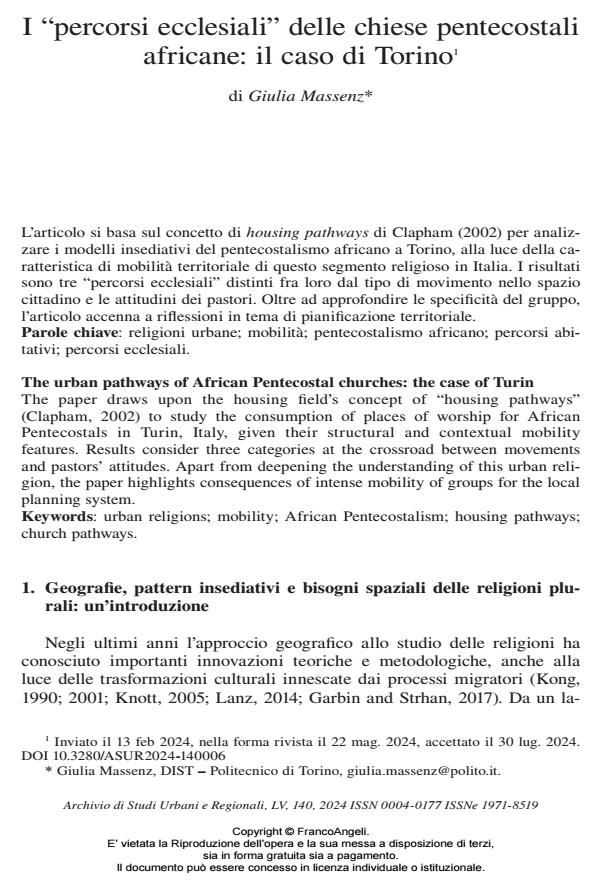The urban pathways of African Pentecostal churches: the case of Turin
Journal title ARCHIVIO DI STUDI URBANI E REGIONALI
Author/s Giulia Massenz
Publishing Year 2024 Issue 2024/140
Language Italian Pages 22 P. 124-145 File size 305 KB
DOI 10.3280/ASUR2024-140006
DOI is like a bar code for intellectual property: to have more infomation
click here
Below, you can see the article first page
If you want to buy this article in PDF format, you can do it, following the instructions to buy download credits

FrancoAngeli is member of Publishers International Linking Association, Inc (PILA), a not-for-profit association which run the CrossRef service enabling links to and from online scholarly content.
The paper draws upon the housing field’s concept of “housing pathways” (Clapham, 2002) to study the consumption of places of worship for African Pentecostals in Turin, Italy, given their structural and contextual mobility features. Results consider three categories at the crossroad between movements and pastors’ attitudes. Apart from deepening the understanding of this urban religion, the paper highlights consequences of intense mobility of groups for the local planning system.
Keywords: urban religions; mobility; African Pentecostalism; housing pathways; church pathways.
Giulia Massenz, I “percorsi ecclesiali” delle chiese pentecostali africane: il caso di Torino in "ARCHIVIO DI STUDI URBANI E REGIONALI" 140/2024, pp 124-145, DOI: 10.3280/ASUR2024-140006